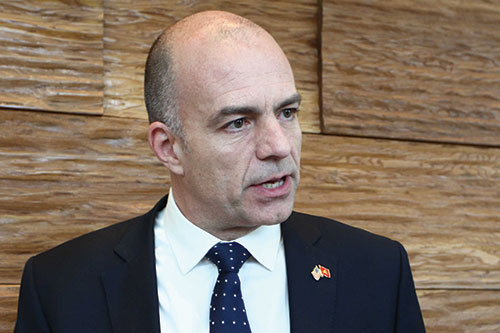GE committed to winds of change
 What is your assessment of the wind power industry in Vietnam?
What is your assessment of the wind power industry in Vietnam?
It’s got enormous potential because Vietnam has huge wind resources. In the long term, wind energy will be cheaper than most forms of fossil-fuel power, and has the added benefit of a zero carbon footprint. One short-term challenge that we encountered during the first project was a lack of qualified human resources – it’s a rapid learning curve. Another challenge in Vietnam is that the feed-in tariff is a little bit too low. We need to see that improved.
We also need to see a proper finance-raising mechanism put in place so it is possible for international investors to finance their projects. Vietnam will need a lot of assistance in providing capital. In terms of the law and policies related to wind energy, I think broadly it is acceptable. It is really the tariff price that needs to be addressed.
Furthermore, there are many wind farms in Vietnam, and the strong power grid in the country is ready to include wind power.
In short, what we really need is the right financial provisions to be put in place; so we need a better feed-in tariff and we also need security behind the purchase agreements for electricity. When that happens, many more wind farms can be set up across Vietnam.
As a big player in Vietnam’s wind power sector, GE has provided 62 wind turbines in total for two phases of the Bac Lieu wind power project in the Mekong Delta, and was recently chosen as the provider of 14 turbines in Phase I of the Tay Nguyen wind farm project in the Central Highlands. What is the long-term goal of GE Energy in Vietnam in the future?
We would like to be a long-term supplier and manufacturer since we have a large factory in Vietnam. GE is producing generators and many hi-tech electrical components from our $110 million plant in Haiphong. We hope to continue expanding our business in the country as the industry expands globally. We export wind turbine products from our factory here all over the world.
We are also seeking Vietnamese companies to help maintain the turbines. Finally, we want to be an investor. We are keen to find opportunities to invest in Vietnamese wind farms.
In Vietnam, we would like to install more wind turbines. We expect it to be a massive market in the future as Vietnam has some of the best potential for wind power in all of Southeast Asia.
How do you evaluate GE’s co-operation with the Vietnamese government and businesses?
We have recently concluded our case study in Vietnam. Our electrical experts in New York have completed a detailed study on the integration of wind turbines into the grid, which will be submitted to the government for assessment before it is released. In the US, GE installs around 3,000 MW of wind turbines every year. It is a lot more than what we have done so far in Vietnam, so we can draw on that experience.
When GE looks for a new project to invest in, we pay attention to the quality of wind resources, like the strength of the wind and the durability of the connection. The other important factor is related to financial agreements, so we need to know that the power purchase agreement will be honoured over the years to come. If this can be secured, we can raise the finance; this is an important factor wherever we go in the world.
Whether at the turbine, plant, or grid level, GE is committed to our customers’ success in wind power. GE’s strategic moves are rooted in three key customer-focused goals.
These pillars drive our decisions and business direction, including the right products for the site, service solutions to run the plant most efficiently, and technology investments to position wind as a mainstream power source.
GE is also committed to making wind mainstream and enabling our customers to operate their wind farms like a conventional power plant, providing a stable flow of electricity to the grid.
We are contributing to the future of the wind industry here, and are continually making investments in wind turbine technology to lower the cost of wind energy, and ensure its long-term competitiveness.
What the stars mean:
★ Poor ★ ★ Promising ★★★ Good ★★★★ Very good ★★★★★ Exceptional
Latest News
More News
- Addressing Vietnam's energy challenges with aeroderivative gas turbines (February 28, 2023 | 09:33)
- How to sprint ahead in 2023’s worldwide energy priorities (February 08, 2023 | 13:55)
- Boosting Vietnam's grid stability through gas turbine technology (November 22, 2022 | 20:02)
- Healthcare trio collaborates to provide thousands of free breast scans (October 27, 2022 | 17:19)
- GE Healthcare's vision for AI-backed radiology (September 29, 2022 | 11:53)
- GE brand trio to shape the future of key industries (July 19, 2022 | 15:35)
- GE unveiling brand names and defining future (July 19, 2022 | 15:16)
- GE: the shortest route towards sustainability (July 18, 2022 | 08:00)
- Be proactive in an uncertain world (May 20, 2022 | 11:40)
- GE secures first 9HA combined cycle power plant order in Vietnam (May 16, 2022 | 17:06)


















 Mobile Version
Mobile Version